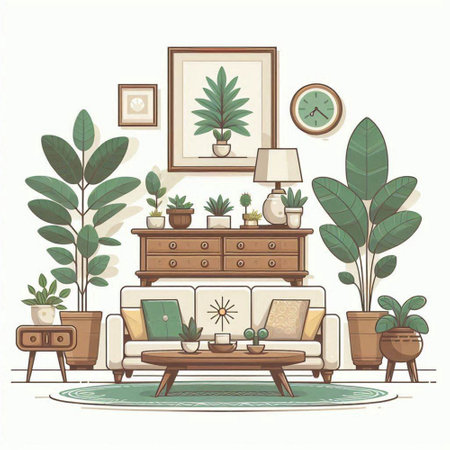Introduction to Interior Design Certification in the UK
In recent years, interior design has evolved into a respected and dynamic profession across the United Kingdom. As more individuals and businesses recognise the value of well-crafted interiors, the demand for qualified professionals has surged. Gaining interior design certification is now seen as a mark of credibility and professionalism within the industry. But what does this certification process actually involve? In essence, interior design certification in the UK encompasses formal recognition of an individual’s knowledge, skills, and ethical standards in designing functional, safe, and aesthetically pleasing spaces. It signals to clients, employers, and peers that you have met rigorous requirements set by governing bodies or professional associations.
The significance of such certification extends beyond personal achievement; it reflects broader trends in the UK’s construction and creative industries. With tighter regulations around building safety, accessibility, and sustainability—especially after recent legislative changes—certified designers are increasingly sought after for both residential and commercial projects. The current landscape is shaped by established institutions like the British Institute of Interior Design (BIID) and various accredited academic programmes, which together help set benchmarks for professional practice. Overall, pursuing certification not only enhances career prospects but also contributes to raising standards throughout the UK’s interior design sector.
2. Understanding UK-Specific Regulatory Bodies and Standards
In the United Kingdom, interior design is a respected profession governed by a number of regulatory bodies and subject to rigorous standards. Unlike some countries where interior design is strictly regulated by law, the UK maintains a self-regulatory approach through professional organisations that ensure high standards of practice, ethical conduct, and ongoing professional development.
Key Organisations Overseeing Interior Design in the UK
The two principal bodies for interior designers in the UK are the British Institute of Interior Design (BIID) and the Society of British and International Interior Design (SBID). Each plays a distinct role in shaping professional standards, offering accreditation, and promoting best practices within the industry.
| Organisation | Description | Main Functions |
|---|---|---|
| British Institute of Interior Design (BIID) | The only professional institute for interior designers in the UK recognised by the government. |
|
| Society of British and International Interior Design (SBID) | A globally-recognised accrediting body supporting both British and international interior designers. |
|
Relevant Standards in UK Interior Design Practice
The UK interior design profession adheres to several key standards which guide quality, safety, and professionalism. These include:
- British Standards (BS): Guidelines covering aspects such as fire safety, electrical installation, and accessibility within interiors.
- BIID Code of Conduct: Outlines expectations for ethical behaviour, client relations, and project management.
- SBID Professional Code of Ethics: Emphasises integrity, accountability, and commitment to continual learning.
- Health & Safety Regulations: Compliance with UK health and safety law is essential on all projects.
The Value of Membership and Accreditation
Membership in either BIID or SBID demonstrates credibility and commitment to excellence. Many clients—particularly commercial or public sector clients—seek designers who are affiliated with these bodies as it provides assurance regarding competence, insurance coverage, and adherence to established professional standards. Ultimately, these organisations serve as gatekeepers for quality across the UK’s vibrant interior design sector.

3. Eligibility Criteria and Prerequisites
Before embarking on the journey towards interior design certification in the UK, it is crucial for prospective applicants to understand the eligibility criteria and prerequisites expected by professional bodies and educational institutions. Below, we outline the key components that form the foundation of a successful application.
Educational Background
Typically, candidates are required to have completed a recognised qualification in interior design or a closely related field. This often means holding at least a Level 3 diploma or an undergraduate degree (BA or BSc) in Interior Design, Architecture, or Spatial Design from an accredited institution. Some certification programmes may also accept equivalent experience or international qualifications, but these are reviewed on a case-by-case basis.
Professional Experience
For many certification routes, relevant work experience is just as important as formal education. Applicants are usually expected to demonstrate a minimum period of hands-on practice within the industry—often ranging from one to three years—under the supervision of a qualified designer or within a reputable firm. This ensures that candidates have acquired practical knowledge of design processes, client interaction, and project management typical to the UK market.
Skill Requirements
Aside from academic and experiential prerequisites, certain core competencies are assessed during the application process. These include technical drawing and digital rendering abilities (using tools such as AutoCAD or SketchUp), proficiency in spatial planning, understanding of building regulations and health & safety standards in the UK, as well as strong communication and presentation skills. A robust portfolio showcasing previous projects is generally mandatory to evidence these competencies.
Meeting these eligibility criteria not only opens doors to reputable certification programmes but also ensures that aspiring interior designers are adequately prepared for the diverse and evolving demands of the profession across the United Kingdom.
4. Step-by-Step Certification Process
Achieving interior design certification in the UK is a structured journey that involves several key stages. Each step is designed to ensure candidates not only possess technical skills but also demonstrate creative and professional competencies. Below, we break down the process from the initial application to the final interview.
Initial Application
The first phase involves submitting a formal application to a recognised UK interior design certifying body such as the British Institute of Interior Design (BIID) or SBID (Society of British and International Interior Design). Applicants typically provide personal details, proof of relevant education, and evidence of work experience.
Typical Application Requirements:
| Requirement | Description |
|---|---|
| Educational Qualifications | Degree or diploma in interior design or related field |
| Professional Experience | Documented industry experience (usually 2+ years) |
| References | Professional references from clients or employers |
Assessment and Portfolio Preparation
Candidates are usually required to prepare a comprehensive portfolio showcasing their work. This portfolio should reflect a range of projects—demonstrating creativity, technical proficiency, and adherence to UK standards for health, safety, and sustainability.
Portfolio Components:
- Project Briefs: Concise descriptions of each project’s objectives and outcomes.
- Visuals: Drawings, renderings, floor plans, mood boards, and photos of completed spaces.
- Technical Documentation: Detailed specifications, material selections, and compliance with UK building regulations.
- Process Documentation: Evidence of research, client communication, and problem-solving strategies.
Examinations and Interviews
The assessment process may include written examinations on design theory, ethics, and UK-specific regulations. Following this, candidates often attend an interview panel where they discuss their portfolio and respond to scenario-based questions that test their practical knowledge and approach to challenges in real-world settings.
| Stage | Description | UK-Specific Focus |
|---|---|---|
| Written Assessment | Tests on design principles and legislation | Building codes, accessibility standards, sustainability practices |
| Portfolio Review | Evaluation by experienced practitioners | Cultural relevance and compliance with local standards |
| Interview Panel | Oral examination and Q&A session | Client management scenarios typical in the UK market |
Acknowledgement of Certification
If successful through all previous stages, candidates are awarded official certification. This grants them professional status—often allowing use of post-nominal letters (e.g., BIID Registered Interior Designer®)—and opens doors to expanded career opportunities within the UK’s thriving design sector.
5. Continuing Professional Development (CPD) and Membership Benefits
In the dynamic field of interior design, the importance of ongoing learning cannot be overstated. The UK places significant emphasis on Continuing Professional Development (CPD) to ensure practitioners remain current with evolving trends, regulations, and best practices. CPD is not just a recommendation but often a requirement for maintaining membership with leading industry bodies such as the British Institute of Interior Design (BIID) and the Chartered Society of Designers (CSD).
The Structure of CPD in the UK
CPD in the UK typically encompasses a range of structured learning activities designed to enhance professional competence. These may include formal courses, seminars, online modules, workshops, conferences, and even self-directed study or research. Industry associations usually provide clear guidelines on the number of hours or points required annually. For example, BIID members are expected to complete a minimum number of CPD hours each year, recording their progress in an official logbook for periodic review.
Key Areas Covered by CPD
- Technical updates in design software and sustainability standards
- Legal and regulatory changes affecting construction and interiors
- Design theory, innovation, and client management skills
Membership Benefits: More Than Just Credentials
Affiliation with recognised industry bodies offers far-reaching advantages beyond certification. Members gain access to exclusive networking events, job boards, mentoring schemes, and industry publications that keep them abreast of cutting-edge developments. Additionally, being part of a professional community enhances credibility among clients and employers—demonstrating commitment to ethical practice and ongoing excellence.
Practical Advantages for Members
- Discounted rates on training, conferences, and insurance
- Access to dispute resolution services and legal advice
- Opportunities to contribute to policy discussions shaping the future of UK interior design
Summary
Engaging with CPD and maintaining active membership in respected professional organisations is essential for career growth in the UK’s interior design sector. It ensures practitioners remain competitive, compliant, and well-connected within the local market—ultimately supporting both personal development and the broader advancement of the profession.
6. Career Pathways and Opportunities in the UK Interior Design Industry
Certified interior designers in the UK enjoy a dynamic range of career pathways, reflecting both the evolving nature of the design sector and the specific demands of the British market. Upon obtaining recognised certification—such as from the British Institute of Interior Design (BIID) or Chartered Society of Designers (CSD)—graduates are well-equipped to pursue various roles and specialisms within the industry.
Typical Roles for Certified Professionals
The most common entry-level role is that of Junior Interior Designer, where individuals work under supervision to develop spatial concepts, assist with sourcing materials, and support project management. Progression leads to positions such as Interior Designer, Senior Designer, and ultimately Lead Designer or Design Director. Some certified professionals opt for highly specialised paths, becoming Commercial Designers, Residential Specialists, or focusing on areas like sustainable design or heritage property renovation.
Work Settings Across the UK Market
Certified interior designers are employed in a variety of settings. These include established design consultancies and architectural practices, multidisciplinary creative agencies, and in-house design teams for property developers or retail brands. Freelancing is also a popular route, with many designers establishing their own studios or working as independent consultants. The diverse landscape of the UK—ranging from bustling urban centres like London and Manchester to picturesque rural communities—provides distinct opportunities, each with its own client expectations and design challenges.
Progression Routes and Professional Development
The pathway for career advancement is closely linked to continued professional development (CPD) and building a strong portfolio. Many employers value ongoing education through short courses or workshops offered by industry bodies. Ambitious designers may seek chartered status with organisations such as the CSD, which signals advanced expertise and can unlock senior leadership roles or teaching opportunities in higher education. Networking through events hosted by BIID, SBID, or regional design festivals further enhances prospects.
A Dynamic Future for Certified Designers
The demand for skilled, certified interior designers remains robust across sectors including residential, commercial, hospitality, healthcare, and public spaces. With increasing focus on sustainability, inclusivity, and smart technology integration in interiors, certified professionals who adapt their skill sets are especially well-placed for long-term success in the UK’s vibrant interior design industry.


